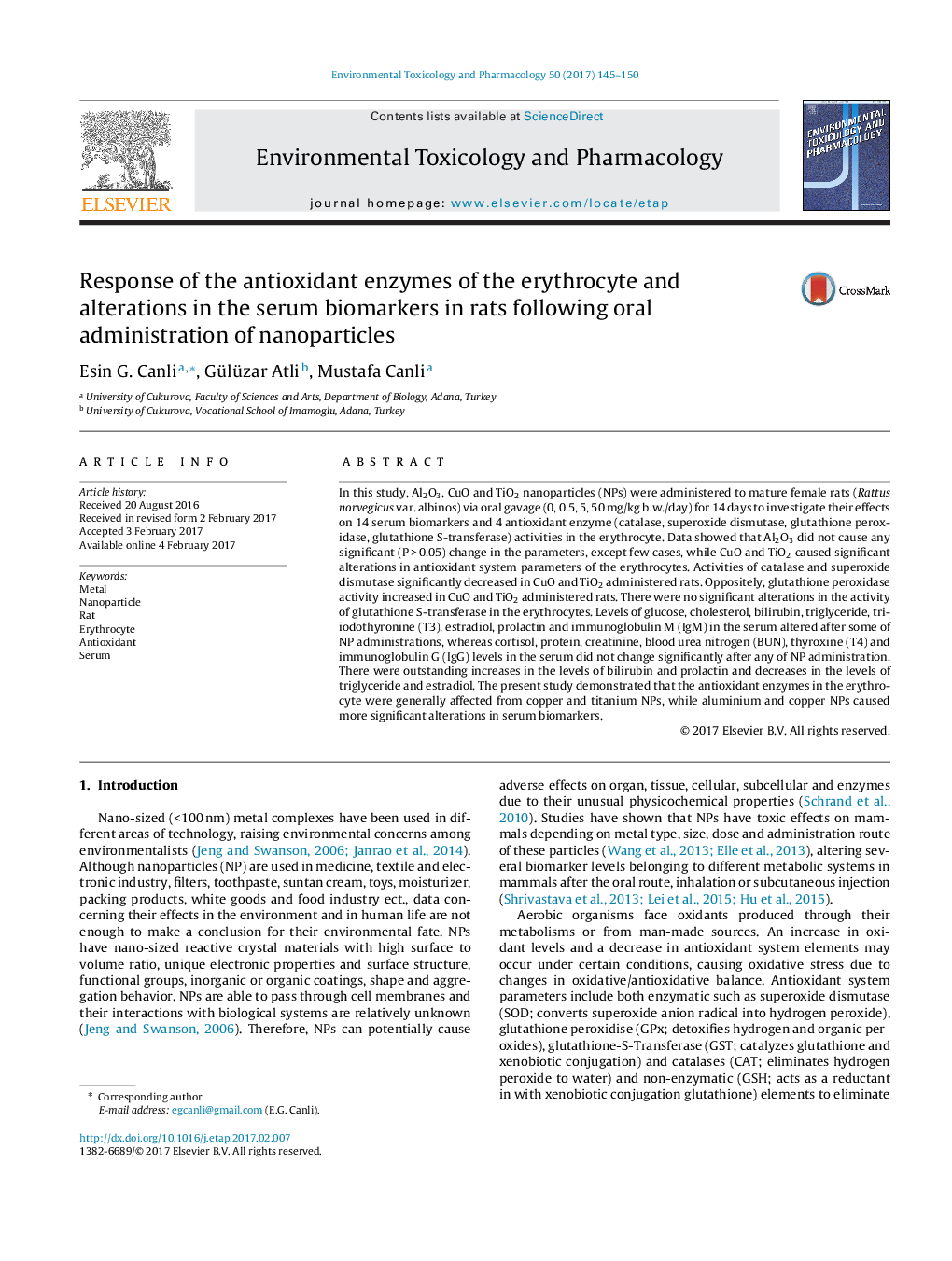| Article ID | Journal | Published Year | Pages | File Type |
|---|---|---|---|---|
| 5559715 | Environmental Toxicology and Pharmacology | 2017 | 6 Pages |
â¢Nanoparticles affect the erythrocyte antioxidant system and serum parameters.â¢Serum parameters were altered generally by Cu and Ti nanoparticles.â¢Antioxidant enzyme activities were altered generally by Cu and Ti nanoparticles.â¢Cu nanoparticle was the most toxic one, while Al nanoparticle the least.
In this study, Al2O3, CuO and TiO2 nanoparticles (NPs) were administered to mature female rats (Rattus norvegicus var. albinos) via oral gavage (0, 0.5, 5, 50Â mg/kg b.w./day) for 14Â days to investigate their effects on 14 serum biomarkers and 4 antioxidant enzyme (catalase, superoxide dismutase, glutathione peroxidase, glutathione S-transferase) activities in the erythrocyte. Data showed that Al2O3 did not cause any significant (PÂ >Â 0.05) change in the parameters, except few cases, while CuO and TiO2 caused significant alterations in antioxidant system parameters of the erythrocytes. Activities of catalase and superoxide dismutase significantly decreased in CuO and TiO2 administered rats. Oppositely, glutathione peroxidase activity increased in CuO and TiO2 administered rats. There were no significant alterations in the activity of glutathione S-transferase in the erythrocytes. Levels of glucose, cholesterol, bilirubin, triglyceride, triiodothyronine (T3), estradiol, prolactin and immunoglobulin M (IgM) in the serum altered after some of NP administrations, whereas cortisol, protein, creatinine, blood urea nitrogen (BUN), thyroxine (T4) and immunoglobulin G (IgG) levels in the serum did not change significantly after any of NP administration. There were outstanding increases in the levels of bilirubin and prolactin and decreases in the levels of triglyceride and estradiol. The present study demonstrated that the antioxidant enzymes in the erythrocyte were generally affected from copper and titanium NPs, while aluminium and copper NPs caused more significant alterations in serum biomarkers.
